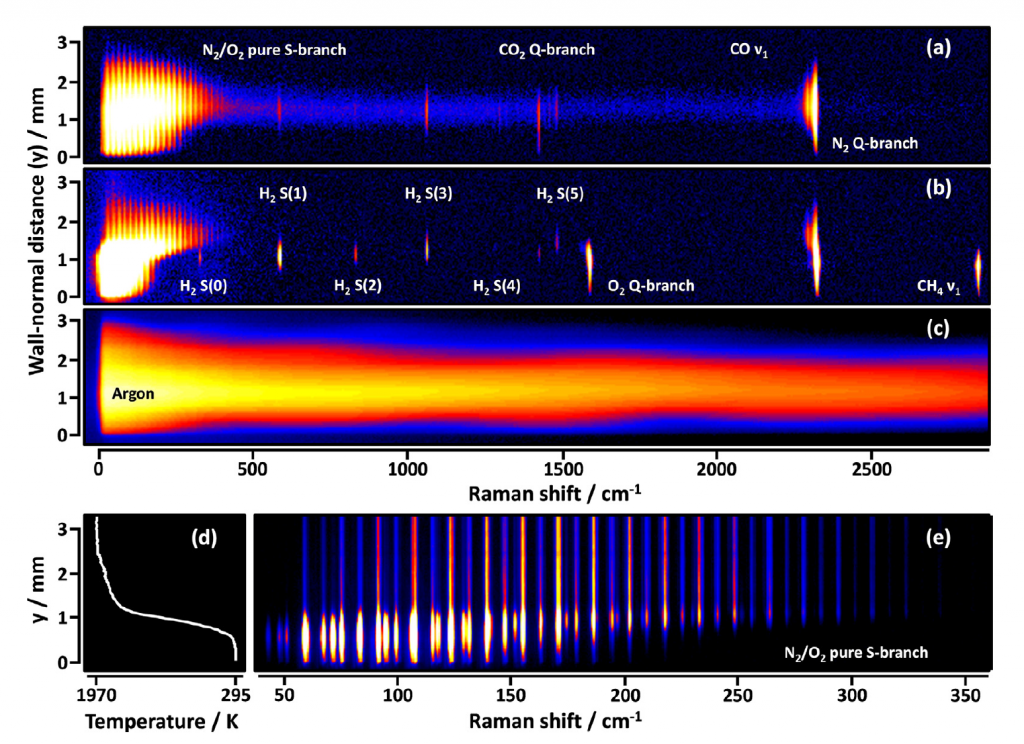Gas-surface interfaces are present in many important chemical systems. From the valorization of methane at catalytically active surfaces, to the impinging of combustion processes on chemically inert interfaces, the complex heterogeneous chemistry and molecular energy transfer processes occurring in the gas phase very near to interfaces must be elucidated to describe overall chemical conversions. In any application of combustion technology, for example, ubiquitous surfaces play a major role in combustion efficiency, as energy transfer into the surface and radical-radical recombination reactions quench the local chemistry. This quenching, in turn, reduces efficiency and increases harmful pollutant production.
Over catalytic surfaces, the near surface gas-phase not only acts as a local reporter of catalytic activity but may also be an active participant in the overall chemical mechanism. To study this environment, we have developed a suite of multiplexed ultrafast nonlinear optical approaches capable of imaging the near-surface gas phase with ~10 µm spatial resolution. These approaches are simultaneously capable of measuring chemical speciation as well as instantaneous molecular energy distributions. The figure above displays a one-dimensional ultrabroadband femtosecond/picosecond coherent anti-Stokes Raman spectroscopy image during a flame-wall quenching event. The approach enables direct measurement of the molecular temperature and relative concentration for all Raman-active molecules in the probed region.
Figure 1 A 1-dimensional femtosecond/picosecond CARS image during a flame-wall quenching event. Panels (a) and (b) provide images at differing stages of quenching. Panel (c) shows the bandwidth of the ~7 fs laser source is demonstrated by recording a CARS spectrum in a nonresonant gas, Argon. A higher-resolution spectrum of the pure-rotational portion of N2 and O2 spectrum is presented in panel (e) and the associated spatially resolved temperature fit is presented in (d).
Key Contributions
- Multiplexed probing of time-resolved chemical reactions with high spatial resolution near surfaces
- Simultaneous probing of all Raman-active species
Partners
- Alexis Bohlin, TU Delft
- Andreas Dreizler, TU Darmstadt
PI: Christopher J. Kliewer
